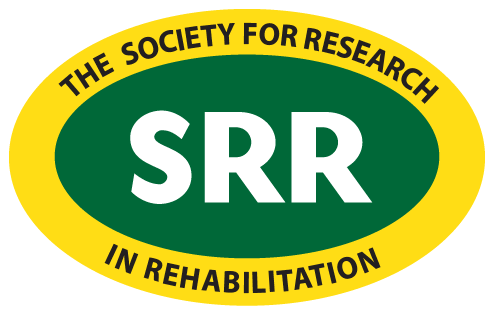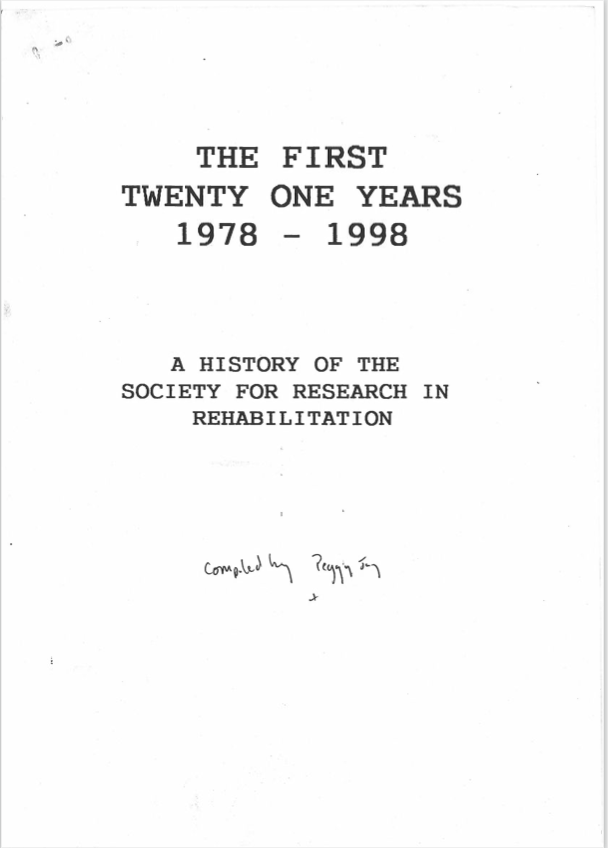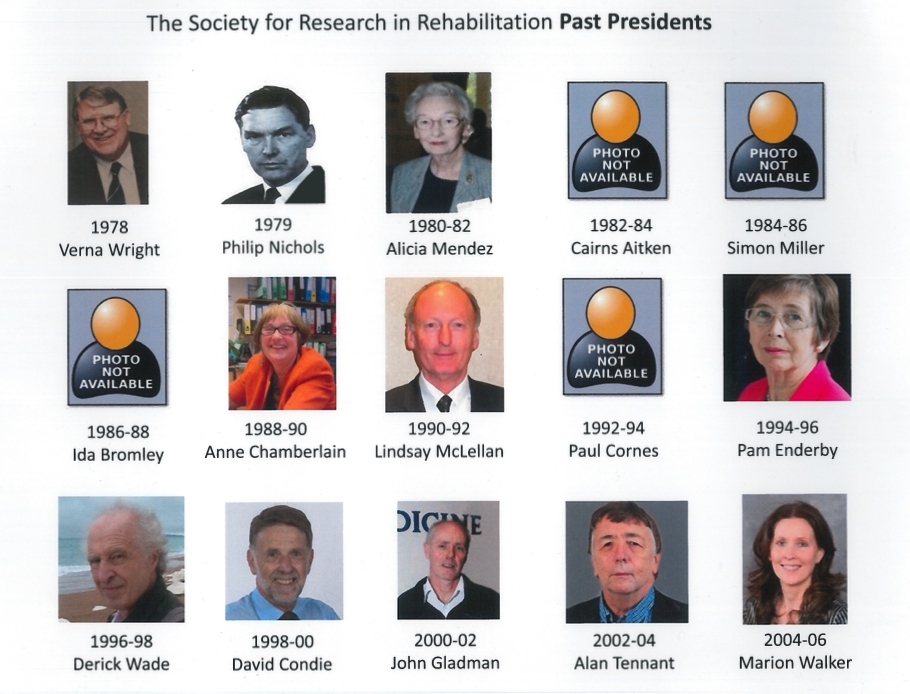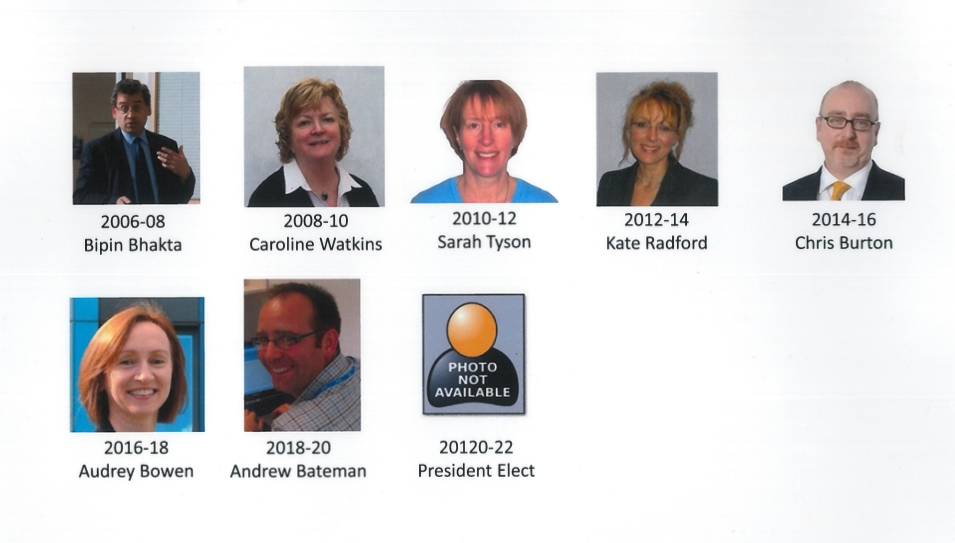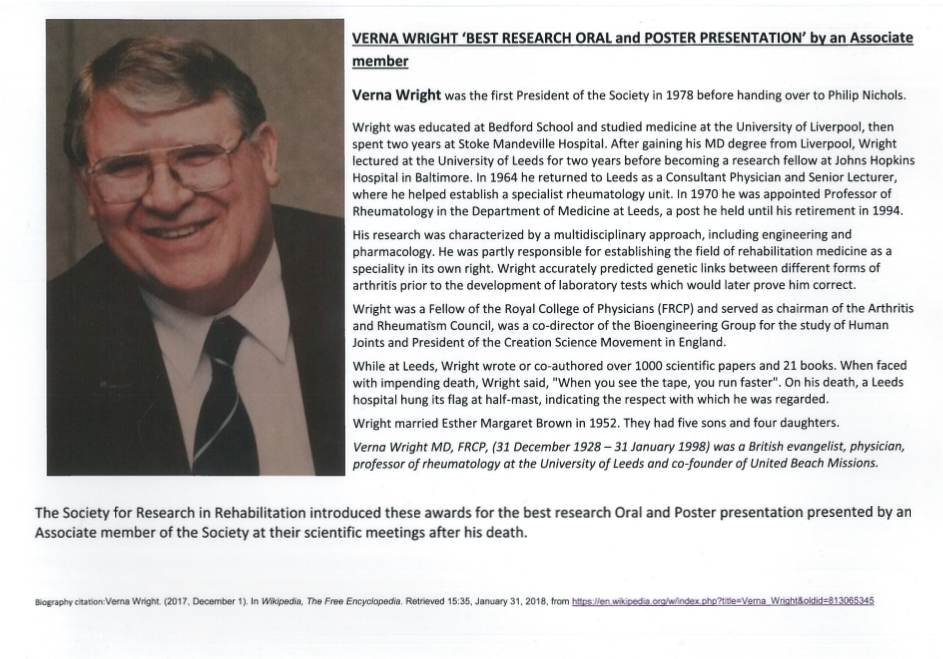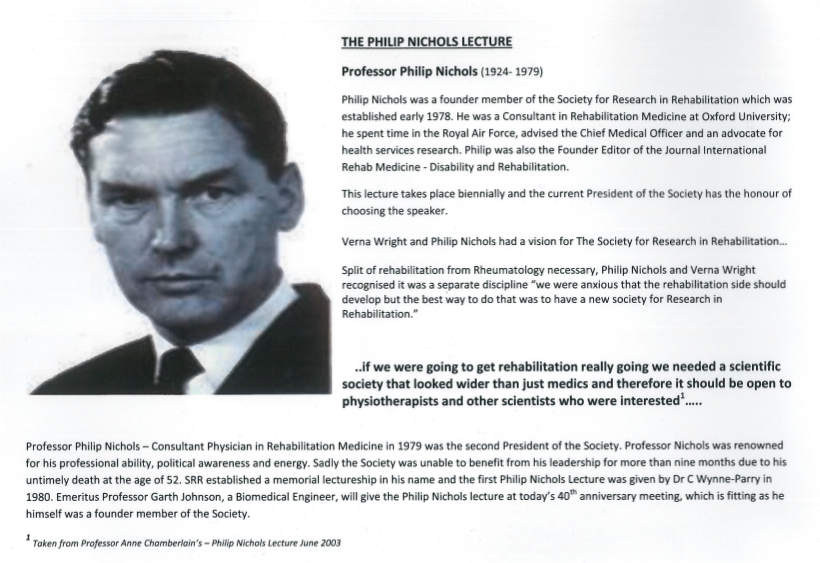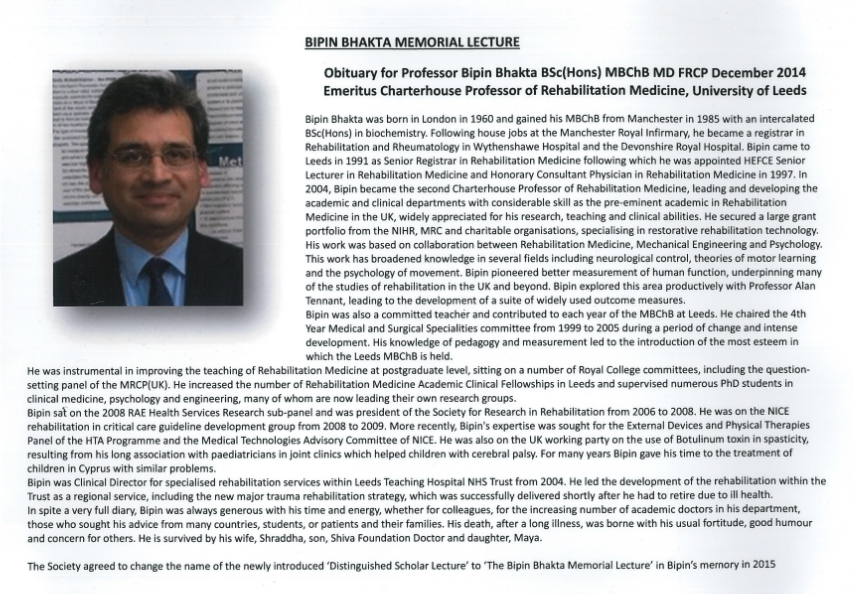About Us
Our History
THE FOUNDING OF THE SOCIETY
The idea of forming a Society for Research in Rehabilitation (SRR) originated in the Rehabilitation Sub-committee of the Joint Committee on Higher Medical Training. It was decided that the aim of the Society should be to promote a research-based approach to the study of medical rehabilitation, reflecting its multi-professional membership. This was a new concept, since up to this time virtually all medically-based research societies had been exclusive to the medical profession.
An inaugural meeting was held in London in January 1978, chaired by Sir Douglas Black, then President of the Royal College of Physicians. One hundred potential founder members, each of whom was active in research in the field of rehabilitation, were invited to attend. They were drawn from the professions of medicine (including basic medical science and branches of clinical medicine), bioengineering, occupational therapy, physiotherapy, psychology, speech and language therapy, nursing, sociology and architecture. A Steering Committee was formed to draw up a draft constitution prior to the first scientific meeting of the new Society to be held in Southampton in June 1978. This draft Constitution was approved at that meeting and a Council was elected.
MEMBERSHIP
Membership of the Society was initially open only to all professionally qualified persons involved in research and concerned with the objects of the Society. This was important for the non-medically qualified members of the Society, since it acknowledged the value of their own qualifications. Attempts to allow those without professional qualifications to join, just because they had an interest in research, were initially resisted. However by 1985 it became clear that too rigid an adherence to this definition was producing difficulties. For example, a professionally qualified teacher, who could present a paper describing the problems of the. only three disabled children she had ever met, would be eligible for membership. A senior driving instructor, whose job was to assess the driving skills of disabled drivers and to recommend solutions to their various problems, would not. The Constitution was therefore amended to state that “Council shall have the power to approve the nomination of others whose research in rehabilitation they consider contributes to the object of the Society. Since 1994 the policy has been to accept anyone into associate membership who is interested in rehabilitation research, with the intention of fostering greater interest in this area of work.
Apart from the founder members, who were automatically made full members, new members have always joined initially as associate members, and have had to present a paper to the Society “reporting their own descriptive or investigative work in the field”, which is of a standard acceptable to the Council, before they can become full members. This was later extended to include presenting a poster.
Initially candidates for associate membership had to be proposed and seconded by two full members. This became a problem as the membership expanded and people applied to become members who were not known to any full members. Council members found themselves scrutinising applications and deciding whether to themselves act as proposers and seconders. This requirement was therefore abandoned in 1994.
This historical background to the SRR comes from the fascinating document shown below. If you wish to read more about the history of the SRR or open other associated material please click on the images below to either open the document or examine an image more closely.
